I met my lovely French husband whilst on a backpacking holiday. It was a coup de foudre, a bolt of lightning; we fell in love in 3 days. When I returned home, this is how I broke the news to my friends:
“I’ve met someone”.
“Ooh”.
“He’s French”.
“Ooh la la!”
French men have a reputation for being amazing lovers, for romance and flowers and kisses on the ponts of Paris. Here are some famous French lovers in history to bring out the romantic in all of us.
Louis XVI and Marie Antoinette
When Marie Antoinette arrived in France in 1770 she was literally stripped of her Austrian heritage, exchanging her luxurious robes for luxurious French robes (and even supposedly her underwear!). She met her husband Louis XVI for the first time after they were already married, a wedding by proxy having occurred one month earlier. They were officially married on 16 May 1770 in the Palace of Versailles when Marie Antoinette was 14, Louis XVI was 15 and not yet a King.
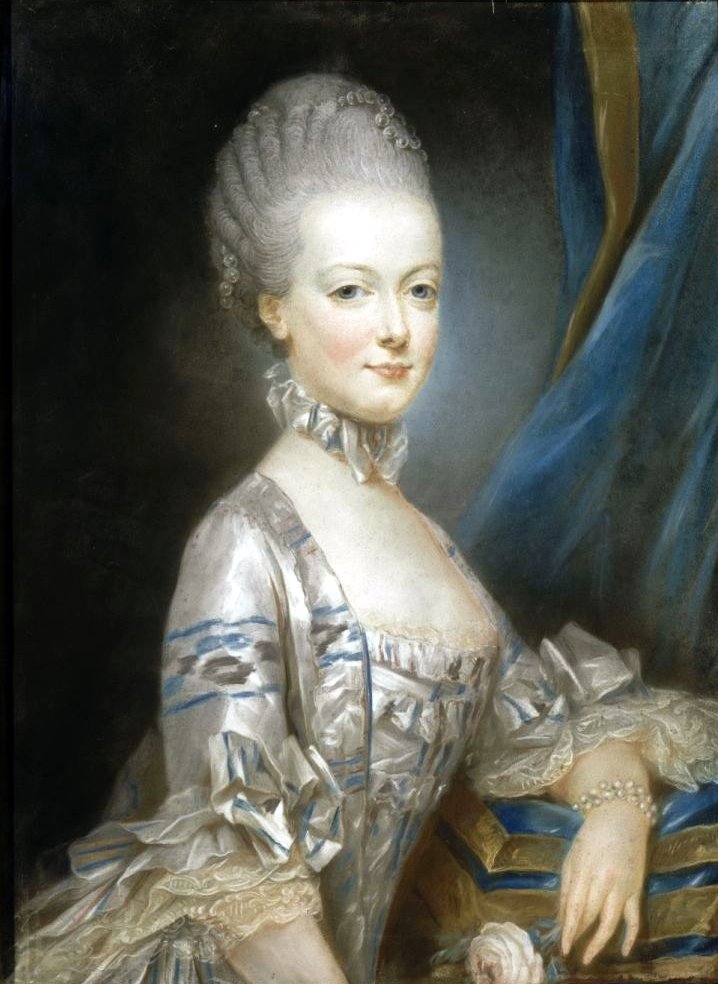

What were her first impressions? By all accounts Louis XVI was not handsome, was very shy and reticent, and lacked social graces. Marie Antoinette was beautiful and much admired by the French court with her flaxen hair, milky complexion and rosy cheeks. For reasons still under speculation to this day, it was a long seven years before the marriage was consummated.
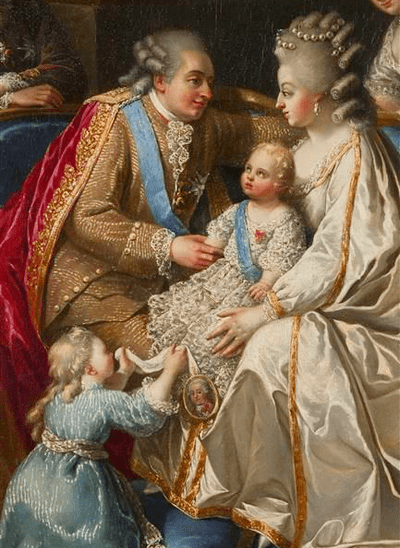
Over time, it is believed Marie Antoinette and Louis XVI came to love each other. With fondness, rather than any passion. There were four children, though royal conjugal relations were a necessity in order to produce heirs rather than a sign of love and affection. Louis XVI, unlike previous French kings, did not take a mistress. Marie Antoinette perhaps took a lover in 1778, the dashing Swedish Count Axel von Ferson. There is no conclusive evidence of their affair, they may have been ‘lovers’ in a platonic sense, but the correspondence between the two is very romantic and touching. Perhaps this was where Marie Antoinette found her passion.
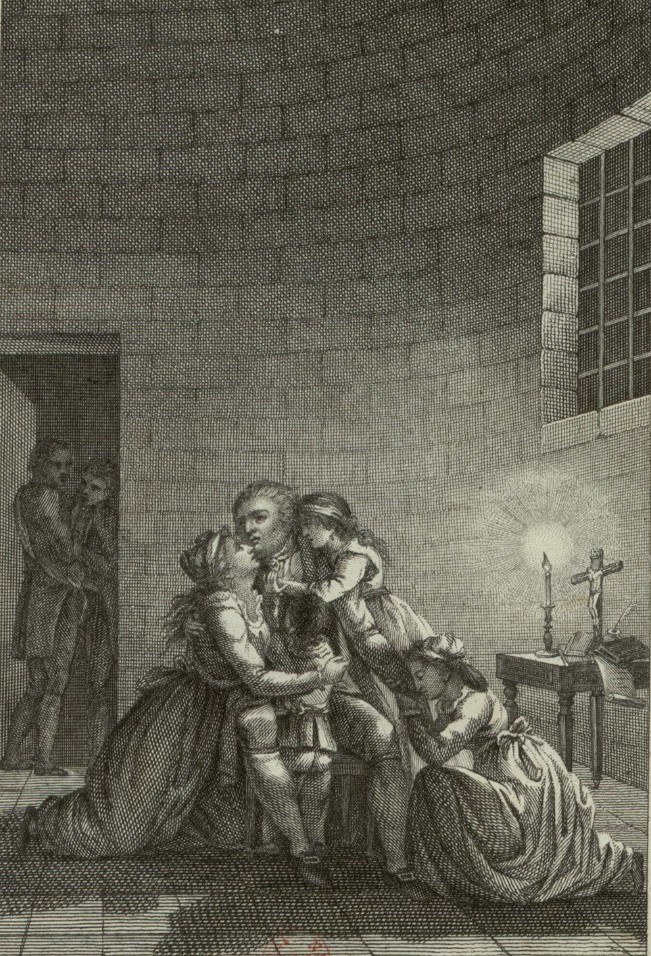
But for a Queen, duty and loyalty to her King is paramount. When the Revolution began in 1789 there were a number of opportunities for Marie Antoinette to escape from France with her children; the majority of French royals had hightailed it out of France as soon as possible and were plotting their comeback outside of its borders. After a disastrous attempt at escape in 1791 where the family were captured in Varennes and escorted back to Paris in disgrace, their fate was sealed. The Queen of France had refused to leave her King, staying loyally by his side, which eventually led to her death by guillotine.
If that isn’t love, then I don’t know what is.
https://www.facebook.com/madamemelissande/videos/2572329426363876/
Joséphine and Napoleon
“Joséphine”, Napoleon supposedly cried out on his deathbed, in exile on the island of Saint Helena. The love story of Napoleon Bonaparte and Joséphine de Beauharnais has been written as one of great passion and true love. But was it?
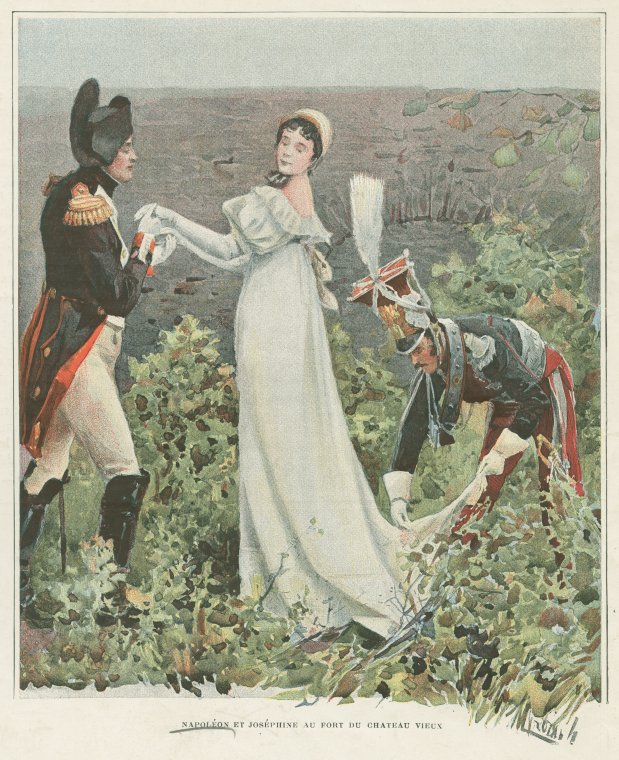
In 1795 Joséphine was a widow with two small children whose husband had been guillotined for being an enemy of the revolution, she was the mistress of French politician Paul Barrass who was growing tired of her, and was 6 years older than Napoleon. He was at this stage merely an ambitious military officer from Corsica who was looking to climb his way to the top of French society. They were perfect for each other and married a year later. Napoleon’s letters to Joséphine in 1796 show a man passionately, desperately in love.
My waking thoughts are all of thee. Your portrait and the remembrance of last night’s delirium have robbed my senses of repose. Sweet and incomparable Joséphine, what an extraordinary influence you have over my heart. Are you vexed? do I see you sad? are you ill at ease? My soul is broken with grief, and there is no rest for your lover. But is there more for me when, delivering ourselves up to the deep feelings which master me, I breathe out upon your lips, upon your heart, a flame which burns me up—ah, it was this past night I realised that your portrait was not you. You start at noon; I shall see you in three hours. Meanwhile, mio dolce amor, accept a thousand kisses, but give me none, for they fire my blood.
I am nothing without you. I scarcely imagine how I existed without knowing you.
Napoleon to Joséphine, 1796
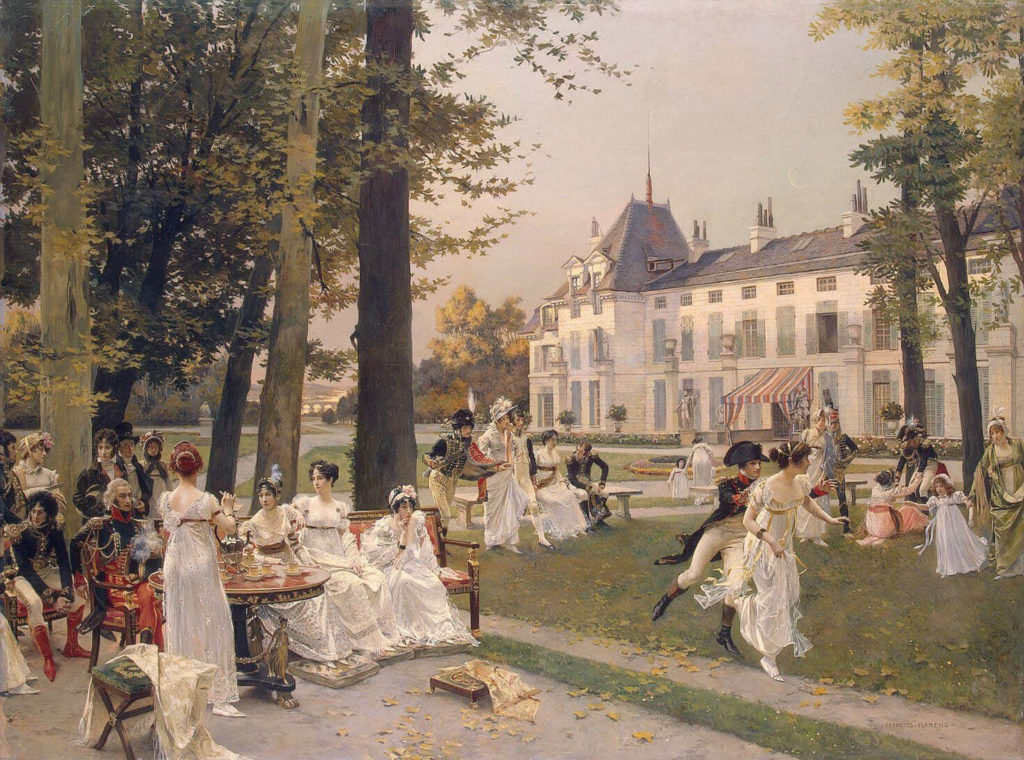
Knowing of Josèphine’s love of roses (she was actually referred to as Rose before Napoleon decided to call her Josèphine, her birth name being Marie Josèphe Rose Tascher de La Pagerie), he ordered his officials to collect plant specimens from seized ships and send them on to the beautiful rose garden Josèphine had created at her chateau of Malmaison.
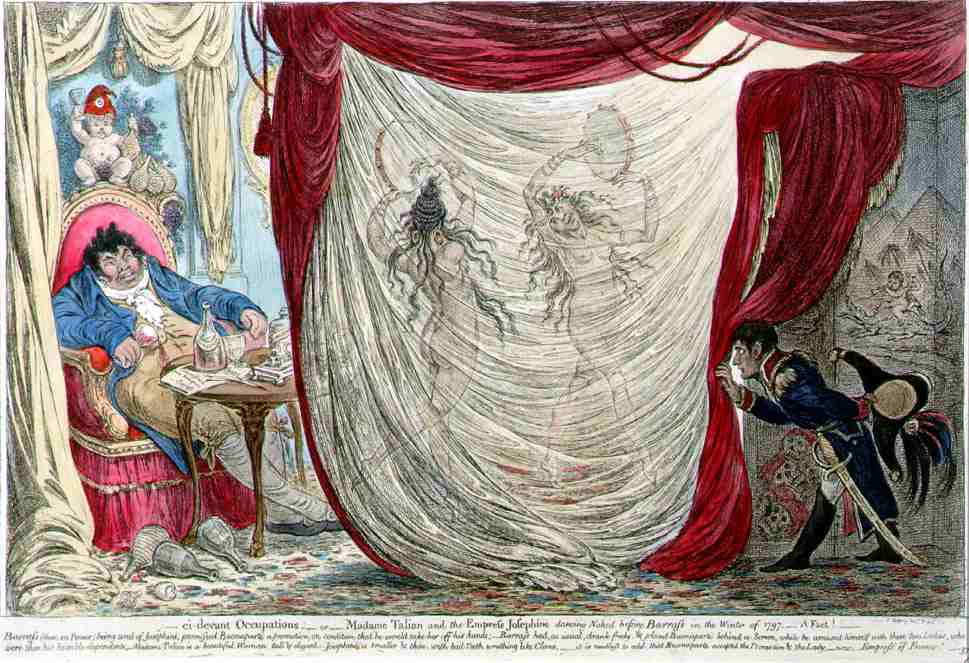
However, while Napoleon was away at war for the first years of their marriage, Joséphine did not wait very long to seek love elsewhere. She was well liked in society as she was elegant and graceful, lively and generous, and she had several affairs of which Napoleon was eventually made aware in 1798.
You, to whom nature has given a kind, genial, and wholly charming disposition, how can you forget the man who loves you with so much fervour? … I write you, me beloved one, very often, and you write very little. You are wicked and naughty, very naughty, as much as you are fickle. It is unfaithful so to deceive a poor husband, a tender lover!
Napoleon to Joséphine
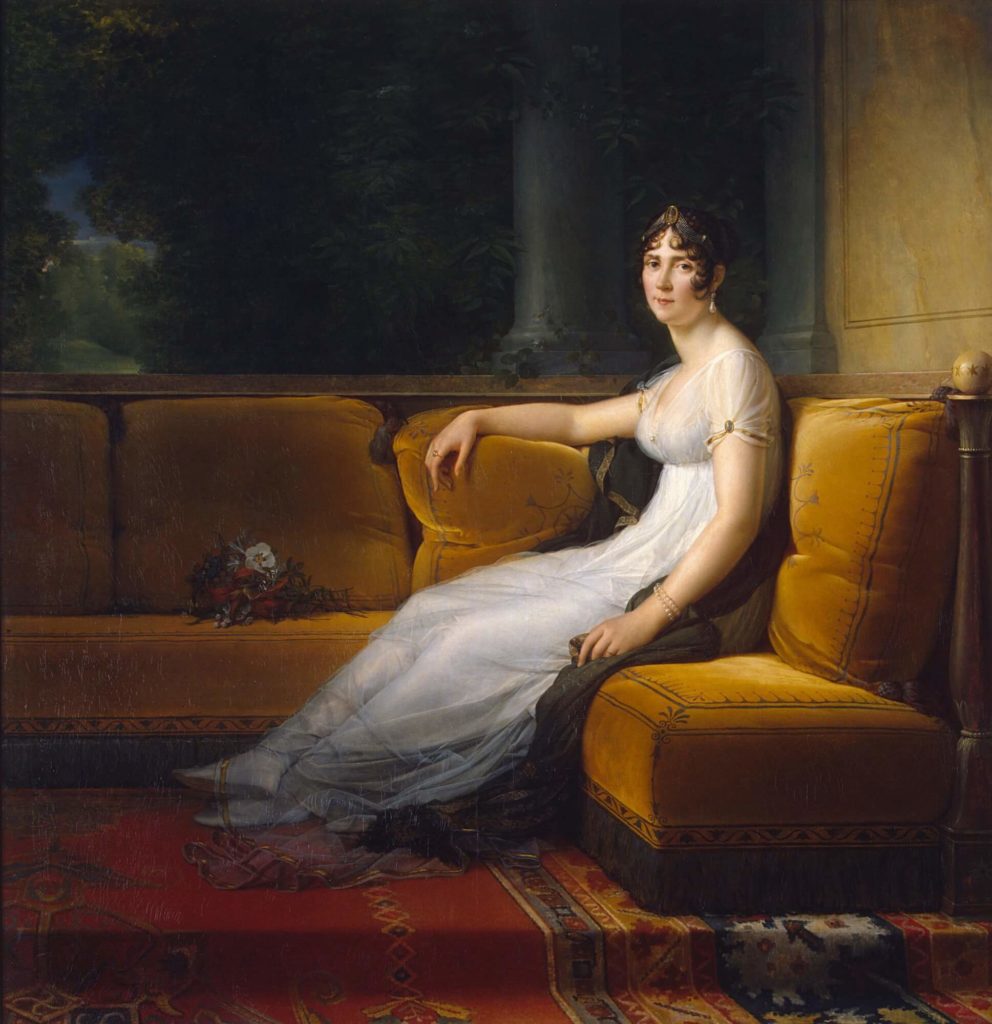
A rocky period in their relationship followed, in which Napoleon also took lovers and fathered at least two illegitimate children.
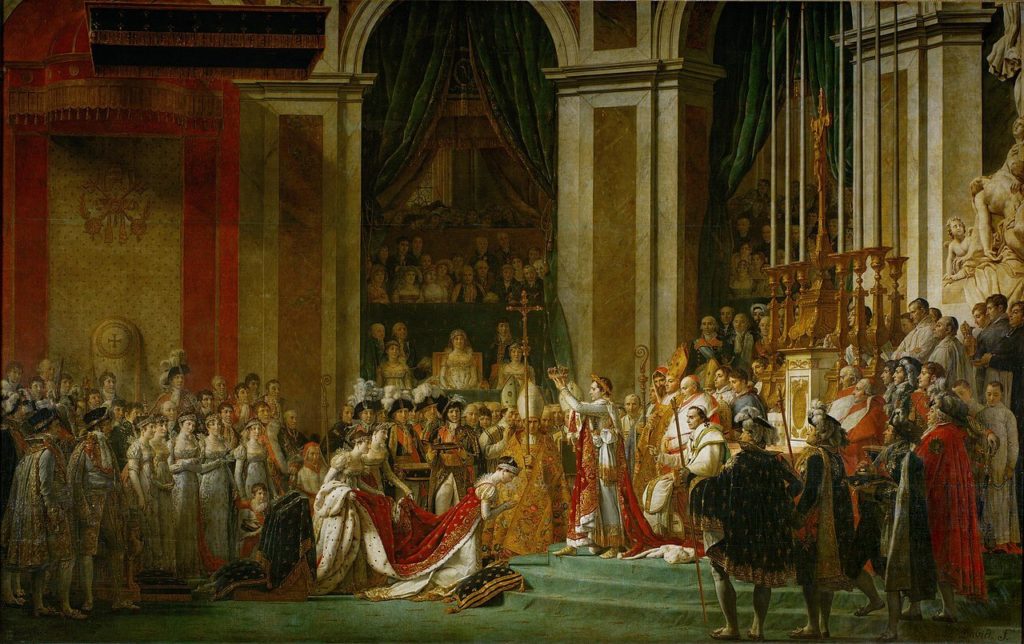
Whether true love conquers all and they forgave each other their indiscretions or not, he and Joséphine were crowned Emperor and Empress of France in 1804.
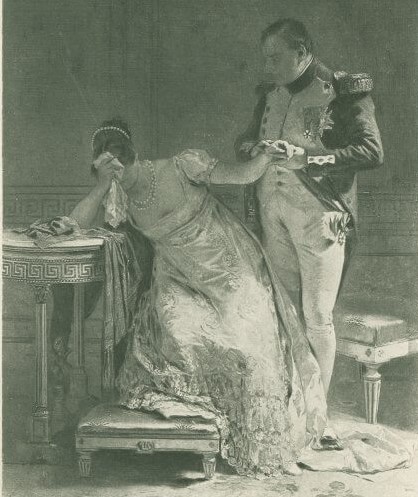
Yet five years later their marriage had ended and Napoleon was married again. The Empress Joséphine had not produced an heir for the Emperor and this failure could not be conquered by true love. They declared their devotion to each other in a special ceremony, the marriage was declared nullified, and within several months Napoleon had married Marie-Louise of Austria. She performed the duty expected of her and gave birth to an heir in 1811.
Joséphine died in 1814, Napoleon in 1821. They had remained friends after their separation, and Josèphine’s daughter Hortense from her first marriage married Napoleon’s brother Louis Bonaparte, and their son became Napoleon III, the last French monarch.
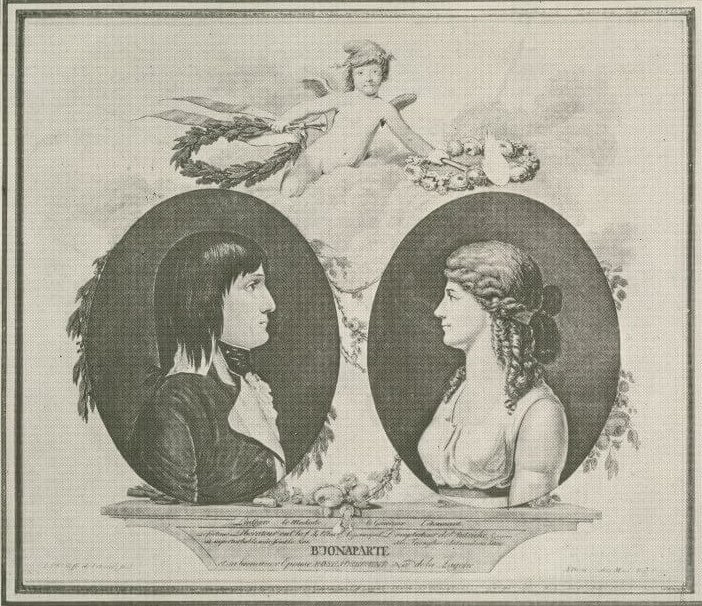
It is speculated that Josèphine loved Napoleon far less than he loved her. Possibly true. His letters show a man completely in love. Should she have had children with Napoleon they may have stayed married. Either way their story leaves us with evidence of heartfelt sentiments and great passions.
Click here to read in full some of Napoleon’s letters to Josèphine.
Edith Piaf and her many loves
If I think of French romance, I think of Edith Piaf. Her songs La Vie en Rose, Je ne regrette rien, Hymne à l’amour tell for us the story of love, of desire, of heartbreak, of sorrow. Her life was messy, she grew up amidst violence and neglect, and left her alcoholic father at the age of 15 to sing on the streets. Her paternal grandmother was the owner of a brothel in Normandy and Piaf claimed that her attitude towards men had come from prostitutes – if a man wanted you, you did not refuse. She had many lovers in her life, and her songs reflect her desire to be loved.

Piaf met boxer Marcel Cerdan in 1947. Both were huge celebrities in France and their romance became a tabloid sensation. Despite the fact that Cerdan already had a wife and three children, they publicly declared their love for each other and shared a blissful summer of 1948. At the height of their love, September 1949, Piaf wrote the song Hymne à l’amour. Cerdan was her great love, the only man she ever loved. Tragically, on October 27, 1949, Cerdan was killed on route to visit Piaf in New York when his plane crashed into a mountain in the Azores.
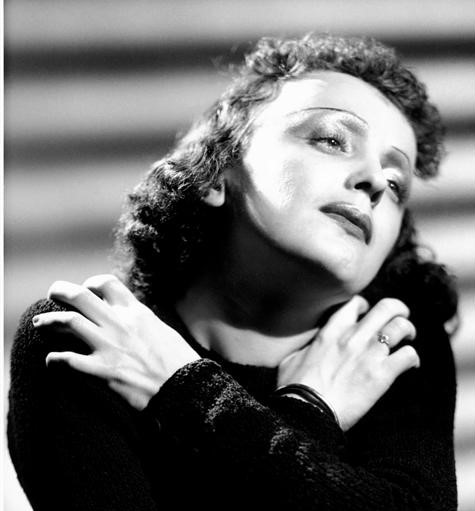
All of France was devastated, Piaf especially so. She blamed herself for his death and fell into a deep drug and alcohol-fuelled depression. In 1951 she began another affair with a married man, cyclist Louis Gérardin, which ended within one year. He was reported to have said that 48 hours with the singer was “more tiring than riding in the Tour de France”.
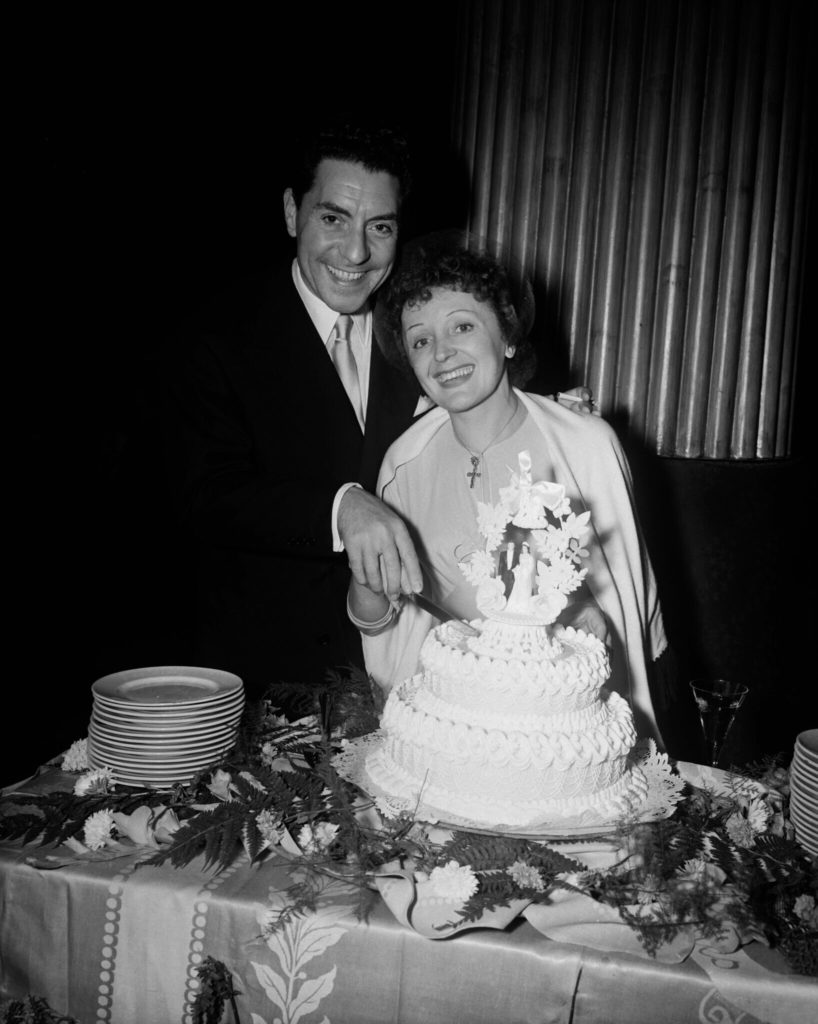
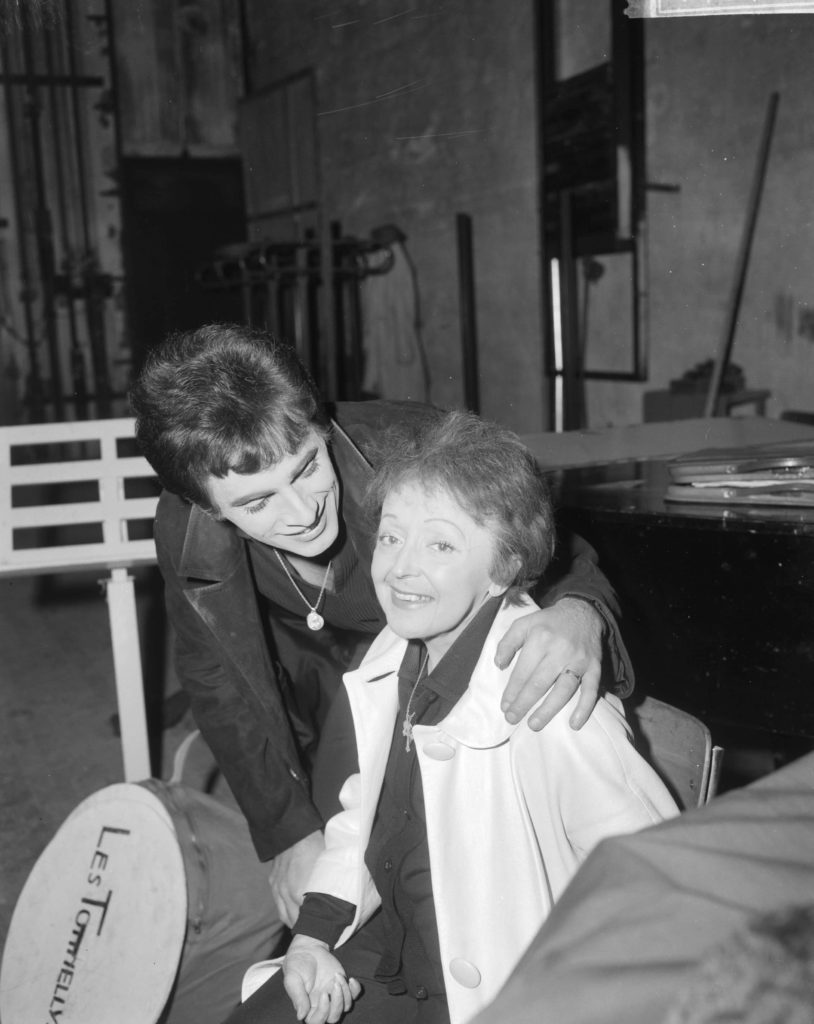
In 1952 Piaf was married for the first time, to French singer Jacques Pills (actress Marlene Dietrich was her matron of honour), but the two divorced three years later. Piaf married again in 1962, to Greek hairdresser and aspiring singer Theophanis Lamboukas, who was 20 years her junior. The marriage was short-lived as Edith Piaf died, aged just 48, the following year.
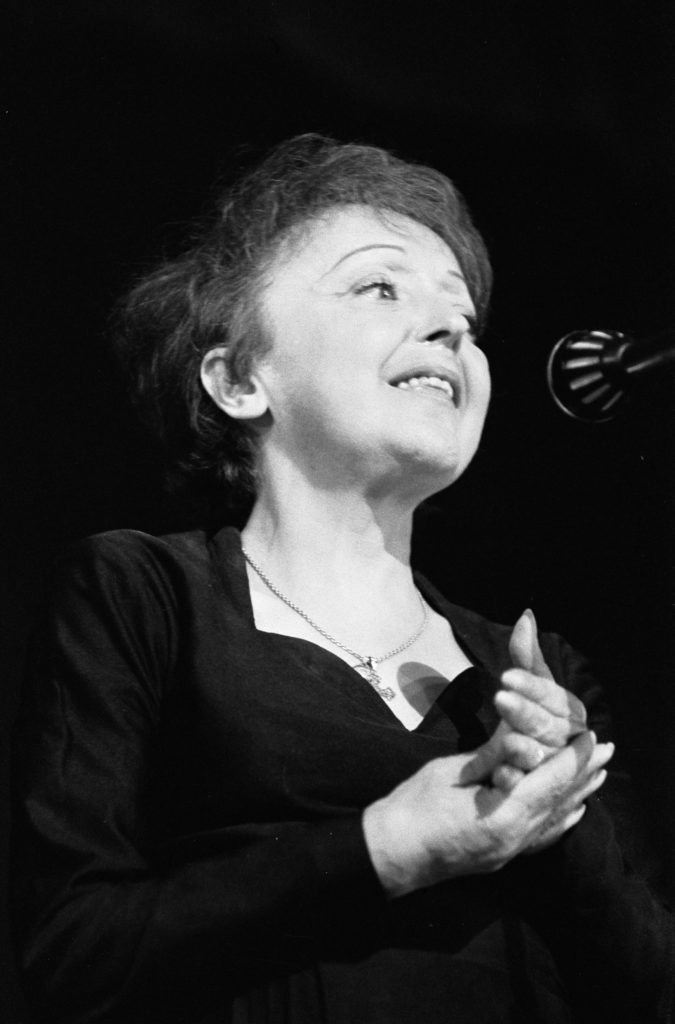
Edith Piaf’s live was devoted to love, she revelled in it, she sang about it, she made her career from it. I am glad she regrets nothing.
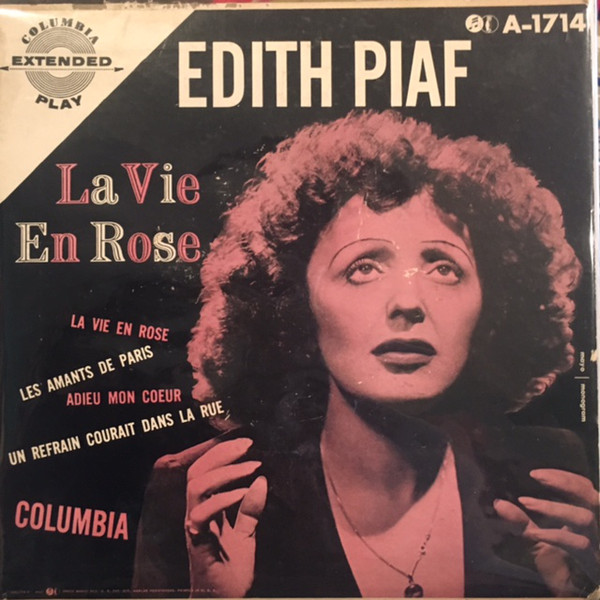
She is buried in the Père-Lachaise cemetery in Paris and on her grave you can read the final verse of the her song L’Hymne à l’Amour:
Dieu réunit ceux qui s’aiment
(God reunites those who love each other)
Gertrude Stein and Alice B. Toklas
Theirs was a love story which started on the day they met, and only ended with their deaths. They were both from California; Gertrude Stein had trained to become a medical doctor, specialising in psychology, and only after dropping out of the Johns Hopkins medical school in her last year, in 1901, did she begin to think of writing. Alice B. Toklas had spent 10 years in Seattle looking after her father, brothers and uncles following the death of her mother. Both moved to Paris, Stein in 1903 to experiment with language and prose, Toklas in 1907 to escape a humdrum existence.
They met on the same night Toklas arrived in Paris and immediately fell in love.
It was Gertrude Stein who held my complete attention, as she did for all the many years I knew her. I knew her until her death, and all these empty ones since then. She was a golden brown presence, burned by the Tuscan sun and with a golden glint in her warm brown hair. She was dressed in a warm brown corduroy suit. She wore a large round coral brooch and when she talked, very little, or laughed, a good deal, I thought her voice came from this brooch. It was unlike anyone else’s voice — deep, full, velvety, like a great contralto’s, like two voices.
Alice B. Toklas
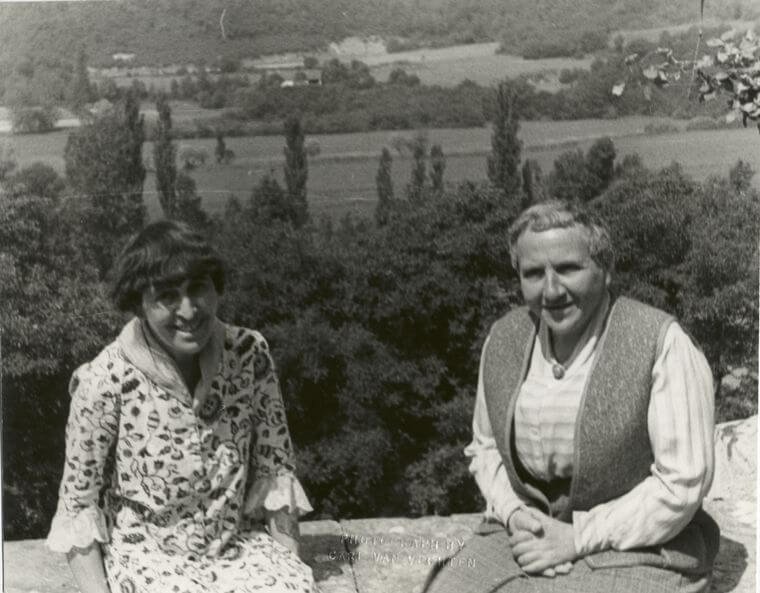
Stein proposed marriage to Toklas on a hillside outside Paris in 1908. Whether they had a private ceremony or not is unknown, but Stein did give Alice a ring.
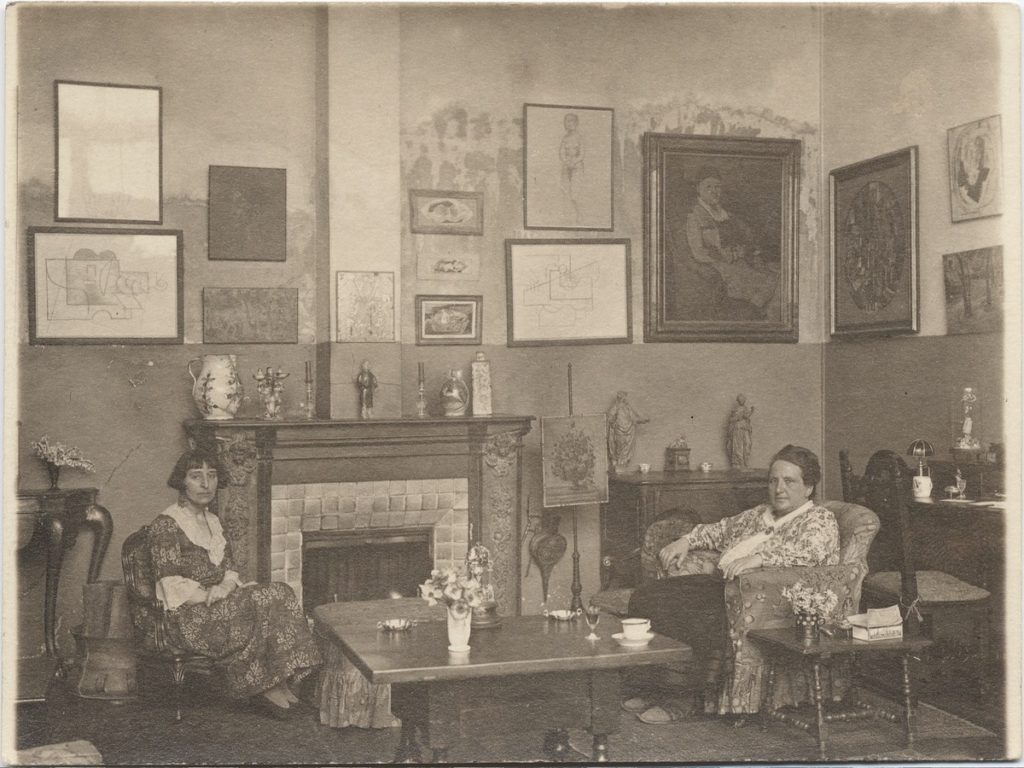
The two women lived at 27 Rue de Fleurus in the Montparnasse district of Paris. Gertrude Stein was the writer, Alice B. Toklas was the everything else – she managed the household, the cooking, the typing, the editing, the proofing. She even created her own small press called Plain Editions so that Stein could publish her work. Their apartment became a flourishing literary salon for figures such as Pablo Picasso, Henri Matisse, Hemingway, James Joyce and F.Scott Fitzgerald. It was Stein who would sit with the male artists and writers and Toklas who would entertain the wives.
Which couple doesn’t give themselves cutesy nicknames? Alice was the ‘wifey’, or ‘baby precious’. Gertrude was ‘husband’ or “Mr Cuddle-Wuddle”. On nights when Stein would stay up late writing, she would leave notes beside the pillow while Toklas slept which she could read when she woke up the next day.
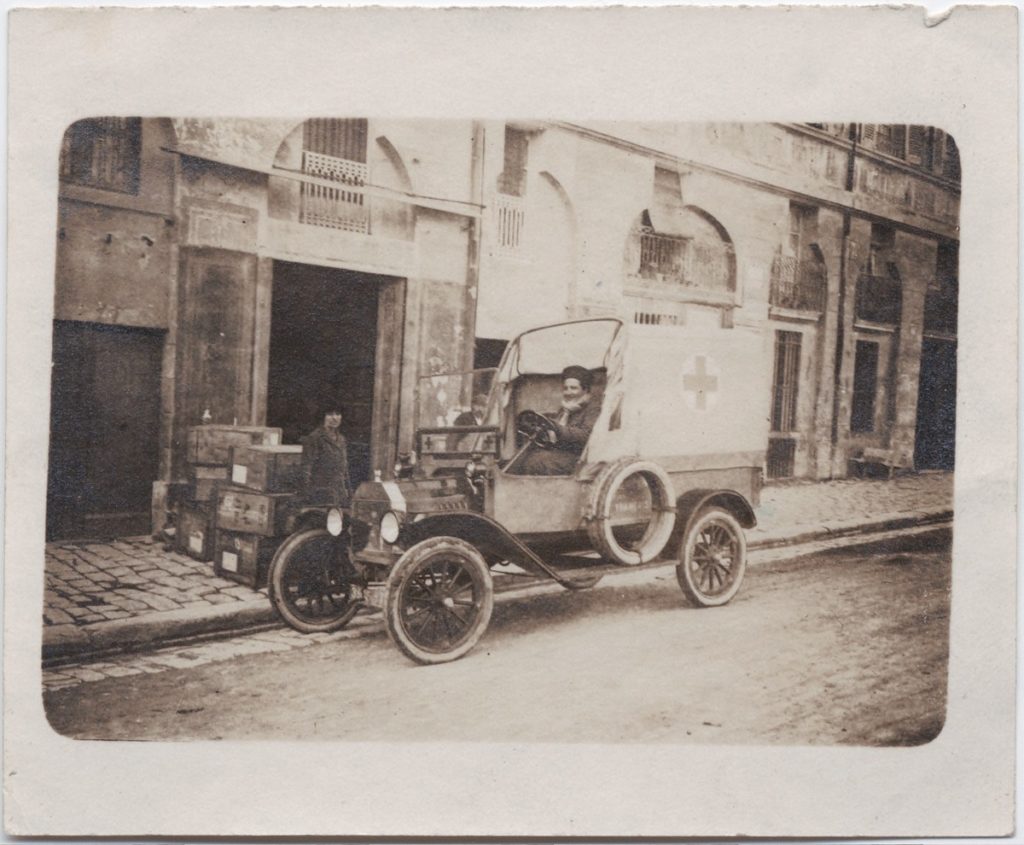
With the advent of WWI, both Gertrude Stein and Alice B. Toklas volunteered for the American French Fund for the French Wounded. As neither of them could drive they took driving lessons, ordered a Ford truck from the US, and when it arrived they delivered supplies to French hospitals. It was noted by a friend that Stein was never quite able to reverse a vehicle very well.
Both Stein and Toklas were devoted to their white poodle, Basket. He was given a daily bath of sulphur water to keep his fur sparkling white, and his teeth were brushed with his own special toothbrush. The original Basket died in 1937 and was replaced with another white poodle, Basket II. There would also be a Basket III.
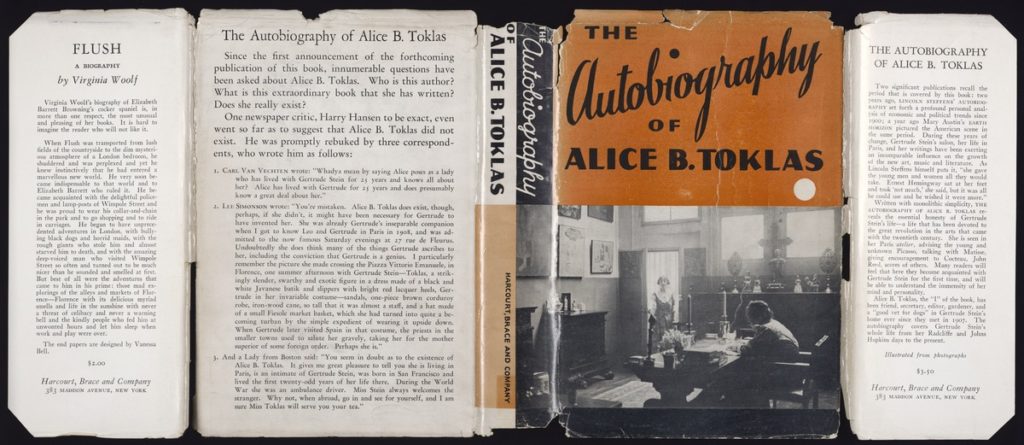
Stein published her memoirs in 1933. The Autobiography of Alice B. Toklas was written about herself, as told through the eyes of her closest companion. It was immensely popular, giving Stein enormous recognition and enabling her to return to America for a triumphant literary tour. Alice B. Toklas was her most fervent and dedicated supporter, and even after the death of Stein she continued to promote her work.
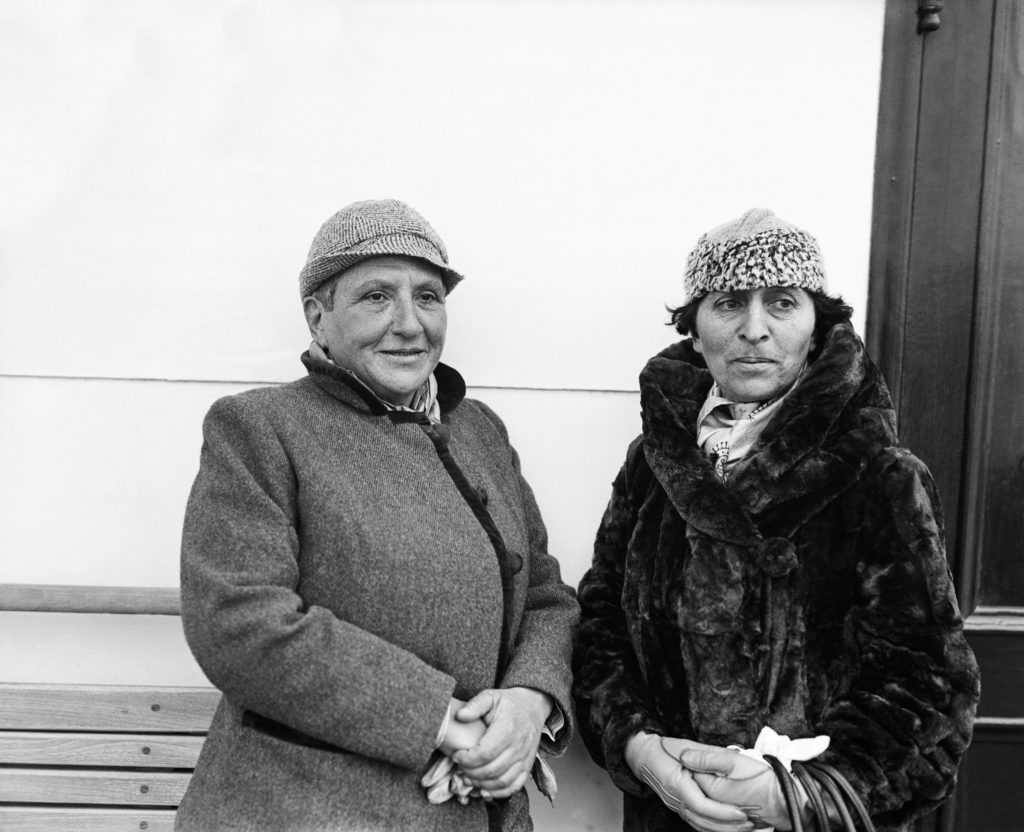
Stein died of stomach cancer on July 27, 1946. Stein left much of her estate, including her world-renowned art collection, to Toklas. But Stein’s family soon had everything locked away as Toklas’ relationship, despite lasting for 39 years, had no legal standing.
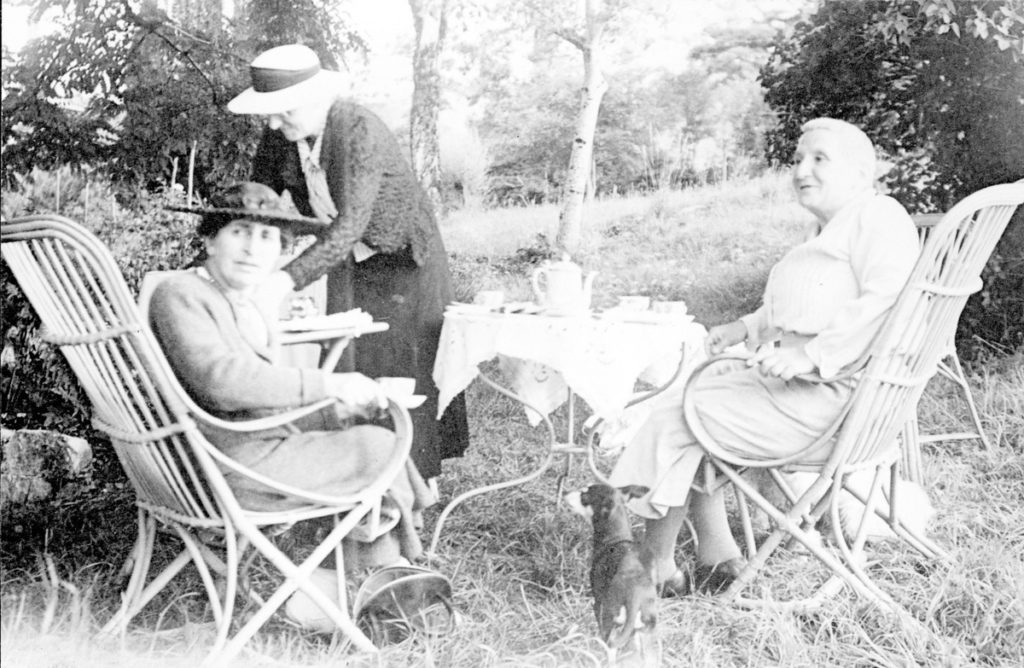
Alice B. Toklas found her own fame after Stein’s death when she published The Alice B. Toklas Cookbook in 1954, most known for her recipe for brownies laced with marijuana. Not long before she died she converted to Catholicism in the hope she would see Stein again in heaven. Ailing and living in poverty, Alice died on March 7, 1967. The two women are buried side by side in the Père-Lachaise cemetery in Paris.
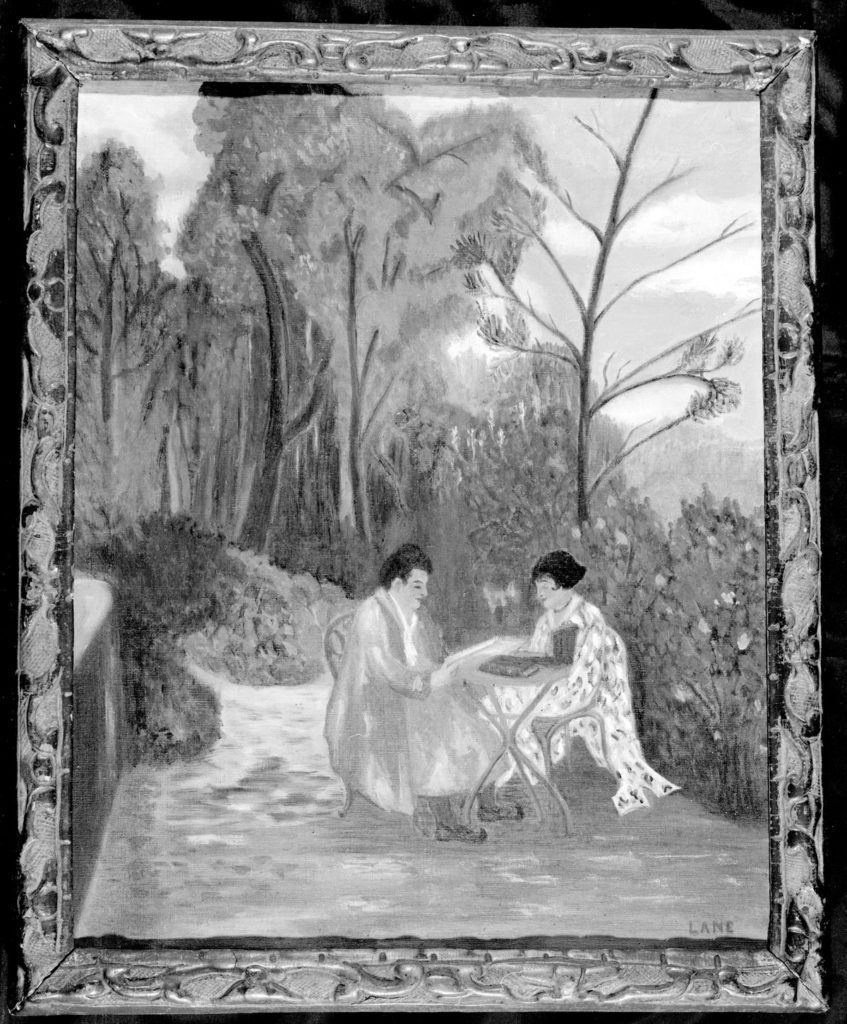
To know to know to love to love her so.
Gertrude Stein, Operas and Plays, 1932
My favourite French lover
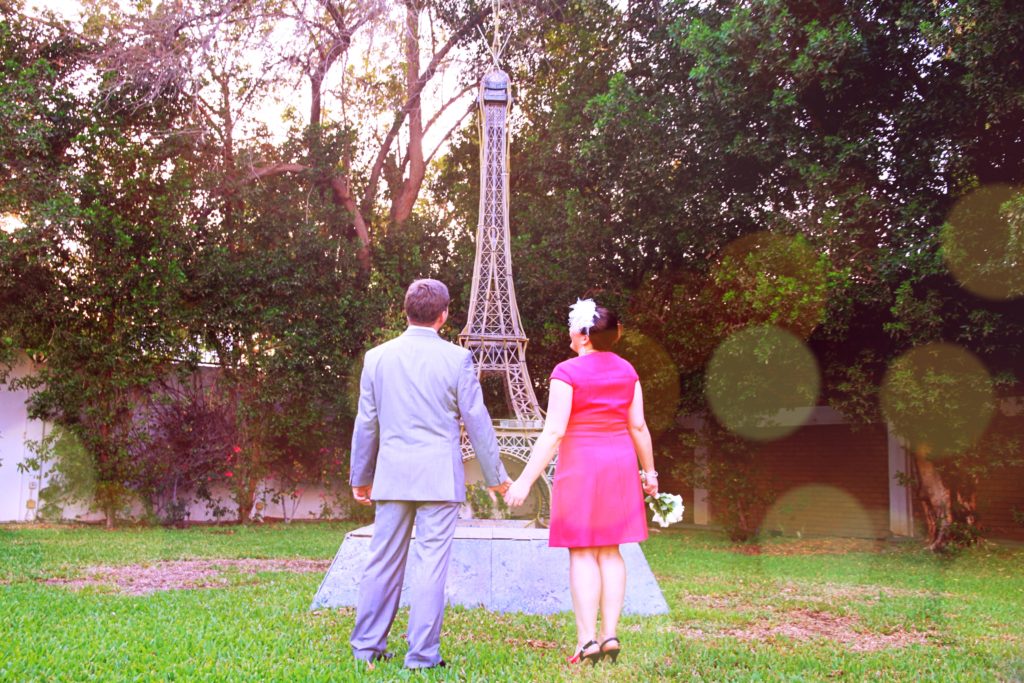
I know that not every love story has a happy ending. I am so grateful for the ones which do (including my own!) and I hope you have your own romantic story to tell xx
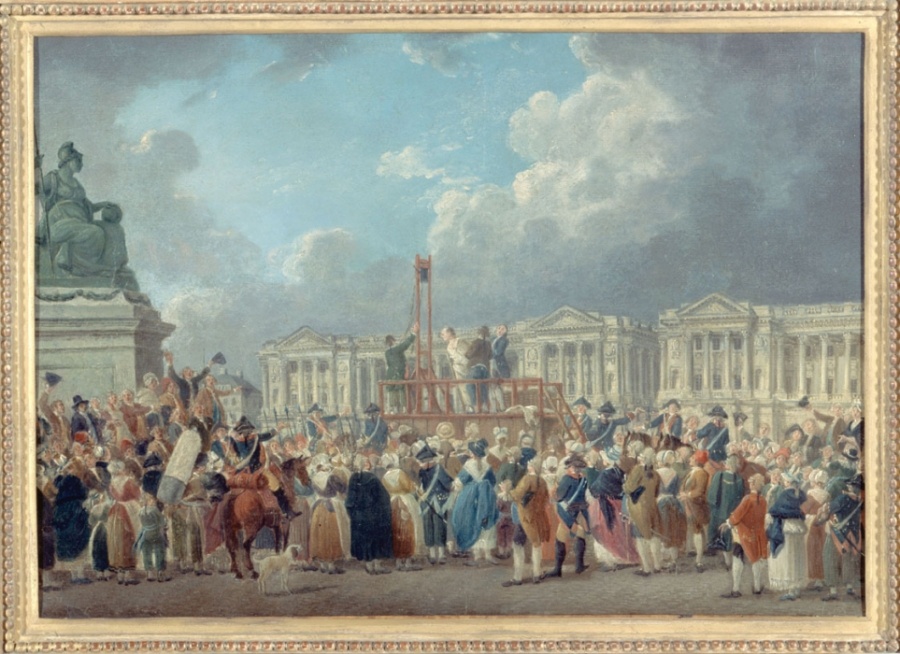


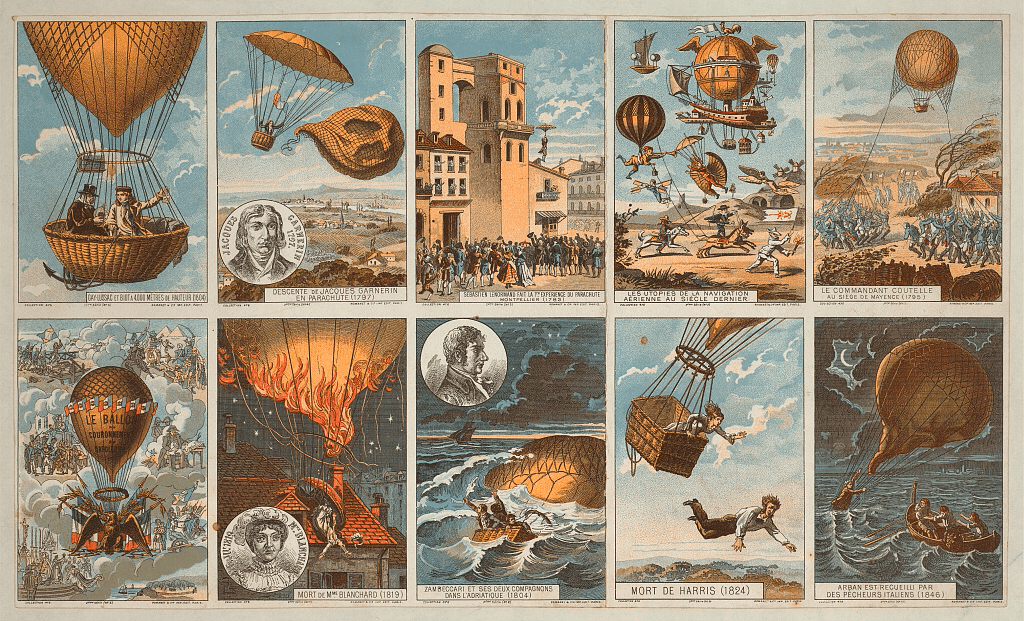
I particularly like the true love story of ‘baby precious’ and ‘Mr Cuddle-Wuddle’ but my favourite all time love story that I never get tired of telling is that of ‘Madame Melissande and her husband’!!
It seems like the Père-Lachaise cemetery in Paris is the ‘in’ place to be buried. Its like the who’s who of burials! Lovely stories Madame Melissande.
Thanks Jenny! I hope to visit and write a blog post from the Père-Lachaise cemetery soon.